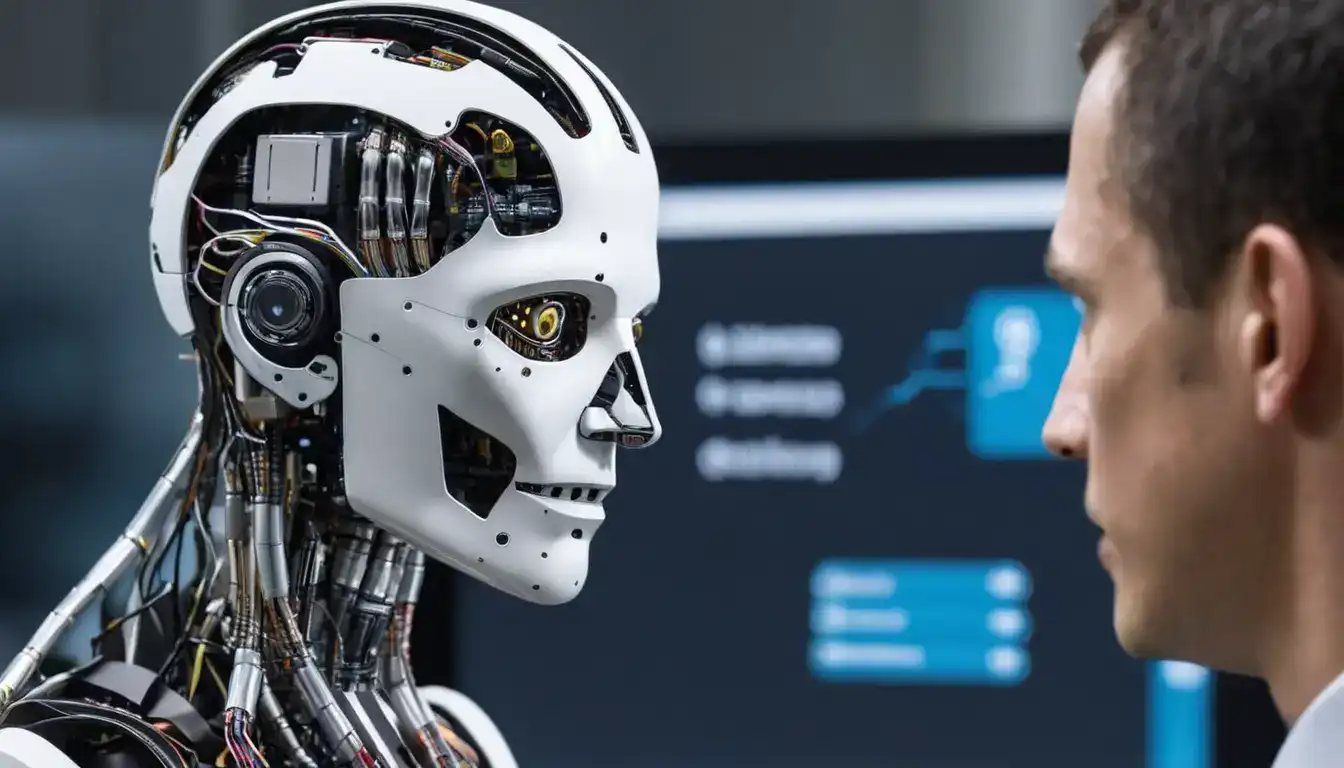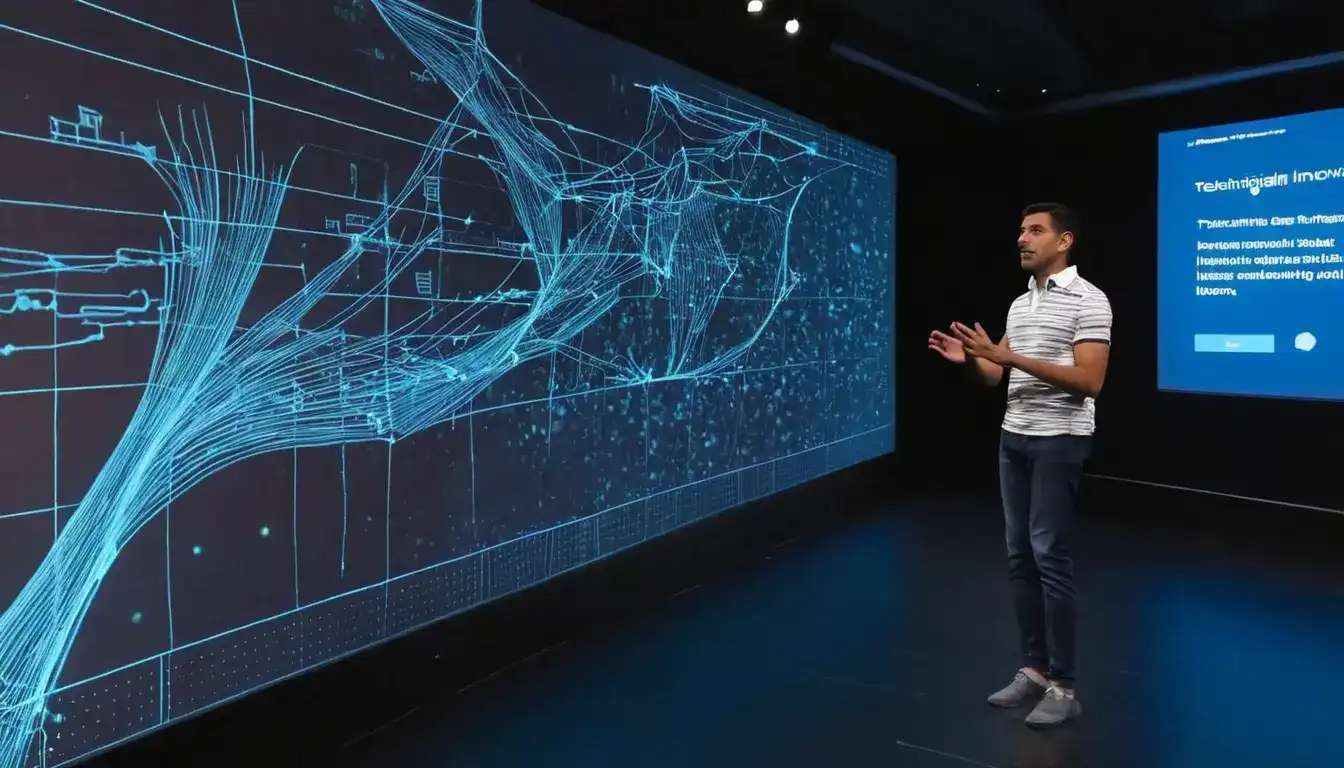Impact of Artificial Intelligence on Business Operations: Efficiency and Innovation
Emily Willis

Photo: Impact of Artificial Intelligence on Business Operations: Efficiency and Innovation
Artificial Intelligence (AI) has emerged as a transformative force in modern business operations, revolutionizing how organizations operate, innovate, and deliver value to customers. This article explores the profound impact of AI on business operations, focusing on its role in enhancing efficiency, fostering innovation, and driving strategic decision-making.
Understanding Artificial Intelligence (AI)
Artificial Intelligence refers to the simulation of human intelligence in machines that are programmed to perform tasks that typically require human intelligence. These tasks include learning, reasoning, problem-solving, perception, language understanding, and decision-making.
The Rise of AI in Business Operations
Automation of Routine Tasks: AI technologies, such as machine learning algorithms and robotic process automation (RPA), automate repetitive tasks that previously required human intervention. This automation reduces human error, speeds up processes, and allows employees to focus on more strategic and creative activities.
Enhanced Data Analysis and Insights: AI enables businesses to analyze vast amounts of data quickly and accurately. Machine learning algorithms identify patterns, trends, and correlations in data that human analysts may overlook. This data-driven insight informs strategic decision-making, improves forecasting accuracy, and identifies new business opportunities.
Personalized Customer Experiences: AI-powered algorithms analyze customer behavior and preferences to deliver personalized experiences. From recommendation engines in e-commerce to chatbots in customer service, AI enhances customer engagement, satisfaction, and loyalty by providing timely and relevant interactions.
Operational Efficiency: AI optimizes supply chain management, inventory forecasting, and logistics by predicting demand, minimizing waste, and optimizing routes. Predictive analytics powered by AI algorithms streamline operations, reduce costs, and improve overall efficiency.
Innovation and Creativity Enabled by AI
Product and Service Innovation: AI fuels innovation by enabling businesses to develop new products and services. From virtual assistants to autonomous vehicles, AI-driven innovations redefine industries and create new market opportunities.
Process Optimization: AI algorithms continuously learn from data and user interactions to optimize business processes. This iterative improvement cycle fosters operational excellence and drives continuous innovation across all business functions.
Accelerated Research and Development: AI accelerates research and development processes by automating experimentation, simulation, and iterative testing. This speeds up innovation cycles, reduces time-to-market for new products, and enhances competitive advantage.
Challenges and Considerations
While AI offers significant benefits to businesses, its implementation may face challenges such as data privacy concerns, ethical implications, and the need for specialized technical expertise. Businesses must address these challenges proactively to harness the full potential of AI while mitigating risks.
Future Trends and Opportunities
Advancements in AI Technology: Continued advancements in AI, including natural language processing, computer vision, and reinforcement learning, will expand its capabilities and applications across industries.
Integration of AI with Emerging Technologies: AI will increasingly integrate with other transformative technologies such as Internet of Things (IoT), blockchain, and 5G networks, unlocking new opportunities for innovation and efficiency.
Ethical AI Adoption: Businesses will prioritize ethical AI adoption to ensure fairness, transparency, and accountability in AI-driven decision-making processes.
Conclusion
In conclusion, Artificial Intelligence is reshaping business operations by enhancing efficiency, fostering innovation, and driving strategic decision-making. Businesses that embrace AI technologies stand to gain a competitive advantage by optimizing operations, personalizing customer experiences, and accelerating innovation cycles. As AI continues to evolve, businesses must adapt their strategies to leverage its capabilities effectively and responsibly.
By leveraging AI to automate routine tasks, enhance data analysis, personalize customer experiences, and drive innovation, businesses can position themselves as leaders in their industries and navigate a rapidly evolving digital landscape with confidence.
Latest ✨
View Allpractical tips for fostering a love of learning in children. It emphasizes the importance of understanding and catering to diverse learning styles, making learning relevant and engaging, fostering a growth mindset, creating a supportive learning environment, and extending the love of learning beyond the classroom.
Emily Willis
Uncover the best AR translation apps on the market through our in-depth testing and reviews. From seamless voice conversations to real-world text translation, these apps will revolutionize the way you communicate across languages.
Emily Willis
Edge computing is a distributed computing model that processes data closer to its source, reducing latency, saving bandwidth, and enhancing security. It is transforming industries such as manufacturing, healthcare, retail, transportation, and energy by enabling real-time data processing and improving operational efficiency.
Emily Willis
the rise of eSports as a global phenomenon, highlighting its evolution from niche to mainstream, the impact of pioneering games and genres, the rise of professionalism, global appeal and audience engagement, cultural impact and integration, and bridging virtual sports and physical sports.
Emily Willis
Business
View All
August 5, 2024
Tips for Creating a Positive and Productive Work CultureCreating a positive and productive work culture is essential for the success of any organization. It requires continuous effort and dedication. The importance of work culture is highlighted, and tips for creating a positive work culture are provided, including planning social outings, maintaining clear expectations, creating listening posts, building psychological safety, watching trends, leading by example, fostering open communication, recognizing and rewarding employees, emphasizing work-life balance, celebrating milestones, providing opportunities for growth and development, and conducting regular feedback sessions.
Emily Willis

August 5, 2024
Apps and Tools that Can Help You Boost Productivityproductivity in today's fast-paced world and highlights various apps and tools that can help individuals stay organized, efficient, and focused. It covers categories such as task management, time tracking, note-taking, communication, password management, automation, email management, project management, focus enhancement, and calendar scheduling.
Emily Willis

August 5, 2024
How to Manage Time EffectivelyEffective time management is crucial for success in all areas of life. By mastering time management, you can boost productivity, reduce stress, and achieve a healthier work-life balance. This guide explores practical tips and techniques to help you take control of your schedule, enhance focus, and maximize your potential.
Emily Willis
Economy
View Allrecent surge in inflation globally, leading to rising prices of goods and services and impacting people's purchasing power and economic stability.
Read MoreIn today's rapidly changing economic landscape, innovation and resilience are more important than ever. Innovation drives progress and competitiveness by creating new ideas and solutions to meet market needs. Resilience helps businesses withstand shocks and bounce back from setbacks by planning strategically and diversifying resources.
Read MoreThe digital economy is rapidly changing the job market, with trends such as remote work, the gig economy, automation, e-commerce, cybersecurity, digital skills, and changes in traditional industries having significant implications. These trends offer both opportunities and challenges, requiring individuals and organizations to adapt by embracing flexibility, investing in continuous learning, and staying abreast of technological advancements in order to thrive in this evolving landscape.
Read MoreEntertainment
View All
August 4, 2024
Social Media's Influence on Celebrity Culture: Trends and ImpactsSocial media has revolutionized celebrity culture by enabling direct fan engagement, promoting authenticity, and creating new trends such as influencer marketing and digital content creation.
Emily Willis

August 5, 2024
VR and AR Transform EntertainmentVirtual reality (VR) and augmented reality (AR) are transforming the entertainment industry by offering immersive experiences that blur the lines between the real and virtual worlds. VR completely transports users into computer-generated environments, while AR overlays digital elements onto the real world.
Emily Willis

August 5, 2024
Entertainment in Society: Social Impact, Cultural Influence, Economic ContributionsEntertainment is more than just a way to pass the time it has a significant impact on society, culture, and the economy. It promotes empathy, sparks conversations, and drives social change. It reflects and shapes cultural trends, while also preserving traditions. The entertainment industry generates jobs, contributes to economic growth, and drives technological innovation.
Emily Willis
Health
View Allmaintaining good health and well-being through nutritional choices. A balanced diet, incorporating whole foods, staying hydrated, consuming nutrient-dense foods, managing portion sizes, practicing mindful eating, eating regular meals and snacks, considering supplements, and adopting sustainable eating practices are all highlighted as effective strategies for enhancing overall.
Emily Willis
Heart disease is a leading cause of death globally, but early detection and prevention strategies can reduce its impact. This article discusses the importance of early detection, common risk factors, preventive measures, and lifestyle changes for heart health. Understanding heart disease, recognizing symptoms, and undergoing regular screenings are crucial. Common risk factors include high blood pressure, high cholesterol, diabetes, smoking, obesity, physical inactivity, and family history. Symptoms of heart disease include chest pain, shortness of breath, fatigue, irregular heartbeat, and swelling. Diagnostic tests and screenings include blood pressure measurement, cholesterol screening, blood glucose test, ECG, stress test, and imaging tests. Preventive measures include adopting a heart-healthy diet, regular physical activity, quitting smoking, managing stress, maintaining a healthy weight, and limiting alcohol consumption. Medications and treatment options may be necessary for individuals at high risk or diagnosed with heart disease.
Emily Willis
cultivating healthy lifestyle habits to improve overall well-being. It focuses on three pillars of well-being: nutrition, exercise, and sleep. It provides tips on how to incorporate these practices into daily routines, such as eating a variety of foods, finding enjoyable forms of exercise, and establishing a consistent sleep schedule.
Emily Willis
Trending 🔥
View All
2
3
4
5
7
8
9
10
Sports
View AllAugust 4, 2024
Sports Technology Innovation: Revolutionizing Training and Performance Analysis
Read MoreTechnology
View All
August 5, 2024
Types of Cloud Computing Services Available
Cloud computing has become essential for modern businesses, offering services that streamline processes, reduce costs, and increase flexibility. Understanding the types of cloud computing services available, such as Infrastructure as a Service (IaaS), Platform as a Service (PaaS), and Software as a Service (SaaS), can help businesses make informed decisions.

August 5, 2024
The Future of Cybersecurity and Upcoming Challenges
cybersecurity in the digital age, highlighting key trends and challenges that will shape the future of cybersecurity. It addresses issues such as the increased use of AI and ML, the growth of IoT devices, ransomware attacks, cloud security, and supply chain attacks. It also outlines upcoming challenges in cybersecurity, including talent shortage, regulatory compliance, cybersecurity for remote work, quantum computing, and social engineering attacks.

August 5, 2024
Challenges and Opportunities in Implementing IoT Technology
The Internet of Things (IoT) is revolutionizing industries by enabling real-time monitoring, automation, and decision-making. However, implementing IoT technology comes with challenges such as security concerns, interoperability issues, data management, scalability, and cost. Despite these challenges, IoT offers opportunities for operational efficiency, enhanced customer experience, innovation, environmental sustainability, and business intelligence.

August 5, 2024
The Most Common Types of Cybersecurity Threats
In today's digital age, cybersecurity threats are increasing in sophistication and frequency. It is important for businesses and individuals to be aware of these threats in order to protect sensitive information and maintain privacy. Understanding common types of cybersecurity threats is the first step in safeguarding against them.





















